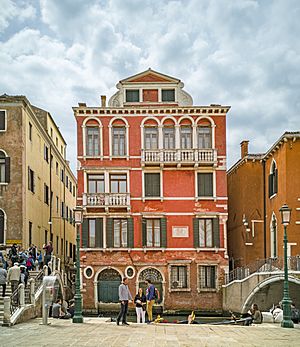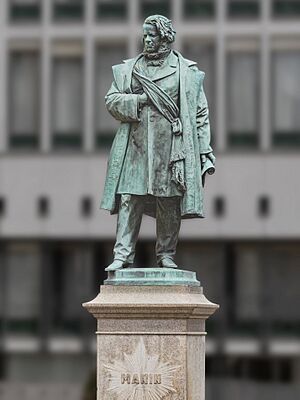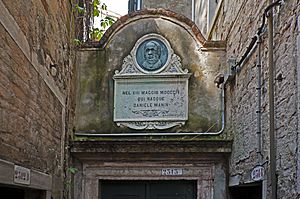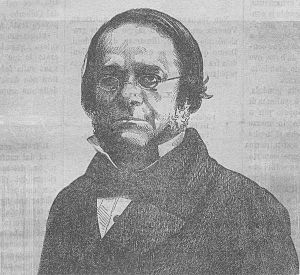Daniele Manin facts for kids
Quick facts for kids
Daniele Manin
|
|
|---|---|
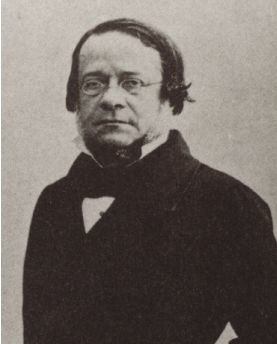 |
|
| President of the Republic of San Marco | |
| In office 17 March 1848 – 22 August 1849 |
|
| Preceded by | Office created |
| Succeeded by | Office abolished |
| Personal details | |
| Born | 13 May 1804 Venice, Italian Republic |
| Died | 22 September 1857 (aged 53) Paris, Second French Empire |
| Nationality | Italian |
| Political party | Independent |
| Spouse | Teresa Perissinotti (1824–1849; her death) |
| Children | Giorgio (1831–1882) |
| Alma mater | University of Padua |
| Profession | Teacher Lawyer |
Daniele Manin (born 13 May 1804 – died 22 September 1857) was an important Italian patriot and statesman. He was a key leader during the Risorgimento in Venice. The Risorgimento was a time when different parts of Italy worked to become one united country. Many historians believe Manin played a big role in making Italy a single nation.
Contents
Daniele Manin's Early Life
Daniele Manin was born in Venice, Italy. His birth name was Daniele Fonseca. His mother, Anna Maria Bellotto, was Italian. His father, Pietro Antonio Fonseca, came from a family that had changed their religion. Daniele's grandfather changed his name to Manin because Ludovico Manin, the last leader of Venice, helped him.
Daniele Manin studied law at the University of Padua. After finishing his studies, he became a lawyer in Venice. From a young age, he strongly disliked Austria, which controlled Venice at the time.
Leading the Revolution in Venice
In 1847, Manin spoke out against Austrian rule. He asked the Venetian government to tell the emperor what the people wanted. Because of this, he was arrested in January 1848. But his arrest only made the people of Venice more upset. They started to see Manin as a hero.
Two months later, many parts of Italy and Europe were having revolutions. The people of Venice forced the Austrian governor to release Manin on 17 March. Soon, the Austrians lost control of Venice. Revolutionaries took over the Arsenal, a large shipyard. Under Manin's leadership, they formed a local guard and a temporary government.
The Austrians left Venice on 26 March. Manin then became the president of the new Republic of San Marco. He wanted Italy to be united. At first, he hoped France would help. But he agreed to what most people wanted and gave up his power to officials from Piedmont on 7 August.
However, after Piedmont lost a battle, the king of Piedmont gave up Lombardy and Venetia to Austria. The people of Venice were very angry at the Piedmontese officials. Manin helped save their lives. A new assembly was formed, and Manin was chosen to lead it again.
By the end of 1848, the Austrians returned with many soldiers. They took back most of the Venetian mainland. But the citizens of Venice fought bravely. Everyone helped, sharing what they had and giving money to the government. In early 1849, Manin was again chosen as president. He led the defense of the city with great skill.
After Piedmont's army lost another battle in March, the Venetian assembly gave Manin unlimited power.
Austrian forces surrounded Venice. Manin was a good organizer. He was helped by General Guglielmo Pepe, who led his army to defend Venice. But on 26 May, the Venetians had to give up Fort Marghera. Food became scarce, and a powder storage blew up in June. In July, a disease called cholera broke out.
The Austrians started bombing Venice itself. When the Sardinian fleet left the Adriatic Sea, Venice was attacked from the sea too. Some people inside the city also caused trouble.
Finally, on 24 August 1849, Venice ran out of food and ammunition. Manin managed to arrange an honorable surrender. Everyone was forgiven except Manin, Pepe, and a few others. They had to leave Venice. On 27 August, Manin left Venice forever on a French ship.
Life in Exile and Final Years
Manin's wife died in Marseille. He arrived in Paris, France, very sick and with almost no money. He had spent all his wealth helping Venice.
In Paris, he earned a living by teaching. He became a leader among other Italians who had been forced to leave their homes. He changed his mind about how Italy should be united. He came to believe that only under King Victor Emmanuel could Italy become free. With two other important figures, Giorgio Pallavicini and Giuseppe La Farina, he started the Società Nazionale Italiana. This group worked to spread the idea of a united Italy under the Piedmontese monarchy.
His last years were spent caring for his daughter, who passed away in 1854. Manin died on 22 September 1857. He was buried in a family tomb in Paris.
In 1868, two years after the Austrians finally left Venice, Manin's body was brought back to his home city. He was given a large public funeral. The boat carrying his coffin was decorated with a golden lion, the symbol of Venice. It also had the Italian flag. Two large silver statues on the boat represented the unity of Italy and Venice. His funeral was described as "magnificent." His remains are now in a special stone tomb in Venice, near the Basilica San Marco.
Why Daniele Manin Was Important
Daniele Manin was known for being very honest and a true statesman. He believed in a united Italy even when many others, like Cavour, thought it was impossible. For example, in 1856, Manin met with Cavour to talk about uniting Italy. After their meeting, Cavour wrote that Manin had spoken about "the unity of Italy and other nonsense." Manin's work with the Italian National Society greatly helped the cause of Italian unification.
See also
 In Spanish: Daniele Manin para niños
In Spanish: Daniele Manin para niños


